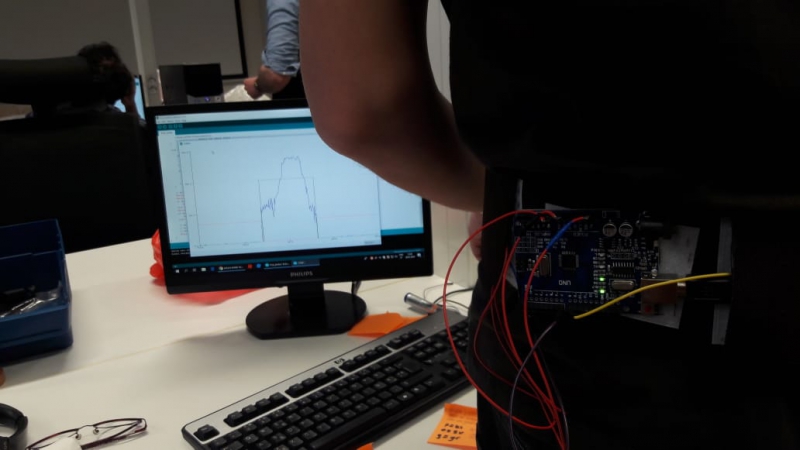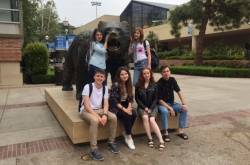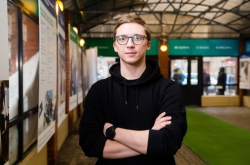Tallinn University’s international two-week program in Experimental Interaction Design (Designing Wearables for Health and Wellbeing) was attended by more than 20 people from all over the globe: the US, China, Europe and other countries and regions. The course wasn’t exclusively aimed at specialists with experience of working in design, but just anyone interested in the topic. For example, the varied participants’ list of this year’s school included an English teacher from Australia, a mathematician from the Higher School of Economics in Moscow, Russia, a clinical psychologist from Italy, among others.
As with the last year’s school, the organizers tasked the participants with creating their own digital environment which would allow for a better level of digital literacy and help the humankind in solving some global healthcare issues. The first two classes were dedicated to the analysis of existing problems in the field of health. At this stage, the participants had to formulate and present ideas they would work on for the remainder of their studies. Having done the brainstorming, the participants moved on to the design stage.
This practical part was supported by an extensive theoretical program. During the first week of their being at Tallinn University, the participants were introduced to the essential concepts of design. They attended a range of lectures on design processes, examined real-world cases and experimented with User Story, which is a short, natural language description of the specific functions a software system should perform for a user. The lectures also covered the health of the musculoskeletal system, which is where the main problems come from.
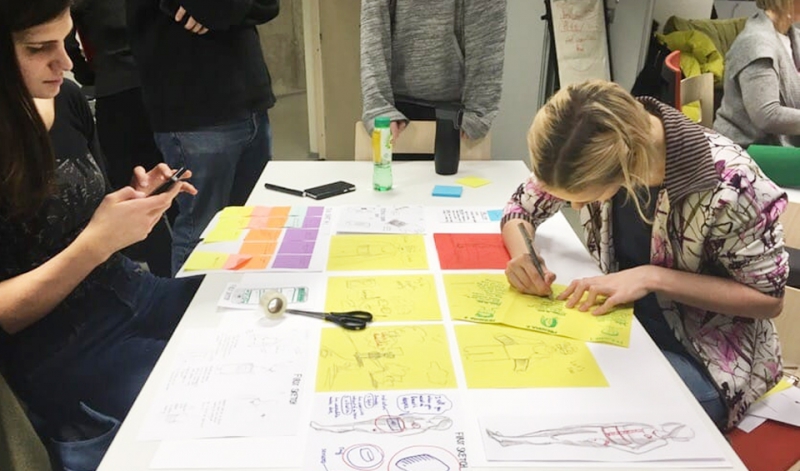
Taking place on the second week of studies, the next phase tackled the development of the prototypes. The participants headed to the laboratory to build mock-ups of their devices aimed at supporting health and wellbeing. In this they were helped by Tallinn University staff who teach at the University’s Master’s program in Interactive Design.
The five projects developed included one on creating smart trousers intended for checking the accuracy of how people with impaired knees do sit-ups to help them go back to health. ITMO University participants also worked on a belt facilitating the right way of breathing, and a system for monitoring the effectiveness of how people clean their teeth by means of a toothbrush.
Yulia Bezbakh, PhD student, staff member at ITMO University’s Design and Multimedia Center

The course appealed to me first and foremost because it gave me the opportunity of creating something truly useful; it wasn’t just another project for boosting the profits of some company, but something that would help people feel better. The team I was part of worked on nurturing the right breathing patterns. In the course of two weeks, we created a belt that controls breathing patterns and gives its wearer the appropriate feedback. Thus it trains people to breathe in the right way, which is by activating their diaphragm rather than just puffing out their chest. Interestingly, while little children know how to breathe correctly, adults lose this skill over the years. Our belt was fitted with pressure sensors, which vibrated when the user started to breathe in the wrong way or held their breathing for too long. We invented several types of feedback, depending on the kind of mistakes the user would be making.
Because of my profession, I’d already had a good understanding of the design process, but I’d never held a soldering gun before I came here. So the second week of the course, when we could actually hold the wires, weld them together, connect them to the right slots, program the device and get a visible result. The second week was also memorable because we had a guest specialist on smart textiles consulting us on materials we could use in our work.
Another stage I found interesting was analyzing existing analogs to our product. We learned that there are lots of devices out there which purpose is to control breathing patterns, such as smart watches and even T-shirts that have an indicator line on their fronts which raises as you breathe in and falls when you breathe out. My colleagues who worked on a smart toothbrush discovered that there already are similar items which give off different-colored bubbles when a user cleans their teeth properly.
All teams had complete freedom in deciding what their prototype would look like and how it would operate, and also in choosing the materials. Our contraption was made from dense, low-elasticity kind of material. We also used elastic ribbons between which we fixed the pressure sensor, so that when a wearer breathes in, the elastic would stretch out and put pressure on the sensor. Of course, the device being a prototype, there are some aspects that need to be improved upon: for example, there should be more sensors, and there are wires sticking out of everywhere, though we did our best in hiding them behind the layover parts. But the most important thing at this stage is this is a fully operating prototype that shows the breathing curve and provides users with feedback.
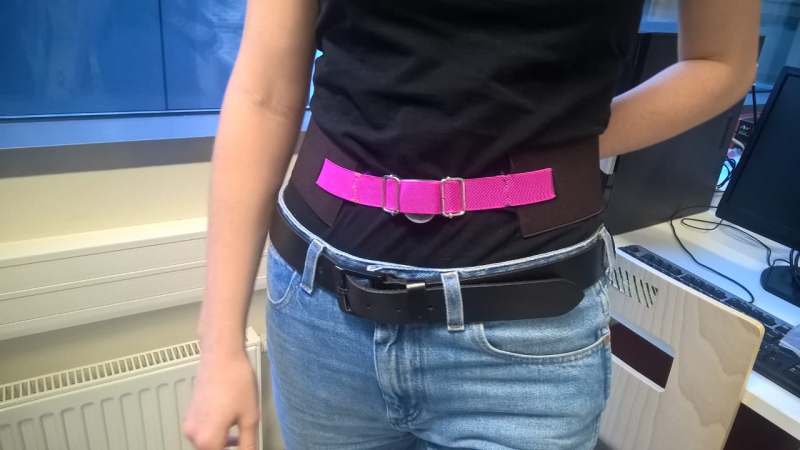
Interactive design is part of interface design, in the latter’s broader definition as the interaction of users and devices, which can happen via screens but isn’t always so. Wearable devices usually interact with users by giving them tactile, audio or visual cues. Before participating at this course, I’d never worked with the interactive design that’s not linked to the screens, so I learned a lot.
You should also understand that this is a school of experimental interactive design, meaning that we as participants don’t focus on commercial viability part of inventing, and are not evaluated as such. What it gives instead is the opportunity to go all the way from coming up with a product idea to implementing it in the form of low-f prototype.
Zarina Gabdullazyanova, first-year Master’s student, Faculty of Software Engineering and Computer Systems
Initially, the team I was part of were tasked with a project called ‘Wrong patterns in manipulating toothbrush’. The aim was to create a toothbrush that would help users clean their teeth in the right way. In the two weeks of the school, we had to create a working prototype, and because it would have been really difficult for us to insert sensors into a real toothbrush, we were offered to use a regular cleaning brush with a handle, which did prove very convenient to work with. We equipped our improvised ‘toothbrush’ with a pressure sensor which would light up blue when there wasn’t any pressure, green when the pressure was optimal, and red when the pressure was too much and risked damaging the gums. We also included sensors which monitor the positioning of the brush and activate vibration feedback indicating that the brush has been in one state for too long and it’s better to change its position.
I hadn’t experimented with interactive design before, and would have kept on treating this area with suspicion had I not tried it here. I didn’t think that working with sensors and the hardware-software platform Arduino actually doesn’t require that much delving into the theory, the only thing you need is courage and a little bit of help from the side. That was the main discovery the school allowed me to make, I suppose.

Svetlana Galoshina, first-year Master’s student, Faculty of Software Engineering and Computer Systems
Like Yulia Bezbakh, I was also in the team that attempted to solve the problem of incorrect breathing. The correct way is pushing the diaphragm down when breathing in, with the stomach expanding, but many people expand their chest instead of the stomach. So our goal was to facilitate correct, deep breathing.
In the end, we created a belt that monitors the expansion in the stomach area and gives the wearer vibration feedback if they forget to breathe with their belly or breathe too often. In addition, the prototype has a second, supporting mode, in which soft, continuous vibration lets the user know when they should breathe in, and stops when they should breathe out.
The premise is quite simple and isn’t likely to surprise anyone, but no one from our team have ever done something similar to this. And here all credit goes to our teachers, because they knowingly guided us in the course of these two weeks, providing us with all the training necessary for performing the tasks but still leaving us scope to doing everything independently, experiment, search.
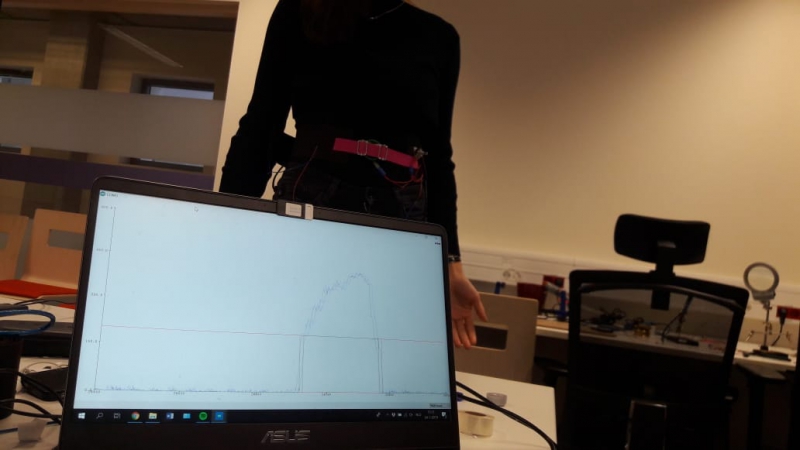
Many of the challenges we faced I had encountered before: studying the target audience, programming, presenting the idea, building the prototype, communicating in English. But this was the first time I did all of this and more within the framework of a single project, the experience that I found extremely valuable. Something new for me, as for pretty much all of other participants, was soldering. I never did that before but discovered that it isn’t as hard as it looks.
All in all, the school helped me overcome the language barrier, introduced me to interesting people, and gave me a major motivation boost to keep up with my work.
Kristina Barysheva, first-year Master’s student, Faculty of Software Engineering and Computer Systems
The group I was part of consisted of four people: me, Maximilian from Germany, Maris from Estonia, and Manda from Australia. We all had a very different skill set, me being the only one with experience in design. We had to invent a device on the topic of ‘Doing exercise right’.
We did a lot of prototyping, both on paper and with actual materials, and moved to Arduino in the second week. The concept we opted for in the end were smart trousers, with a focus on monitoring the knees during sit-ups. That was because when doing sports, many people often do exercises in the wrong way, and many suffer from knee pain. Our device aims to help people do sit-ups right.
We made a lot of changes into our idea, and obtained first results as quickly as on the first day. We also did a lot of research into how people could use our smart trousers in the most effective way possible, and how to allow for the most intuitively simple delivery of signals. Gathering data was one of the main functions our device had to encapsulate. For this we needed to understand the kind of data we get when the knee position is right, or, vice versa, wrong. We tested our prototype on real people and discovered a pattern that allowed to identify that data, though it has to be noted that different people have different patterns, and the device needs to be calibrated accordingly before use. By the time of the final presentation, we managed to do all the tasks we were set with: we had a working prototype and we succeeded in gathering the data.
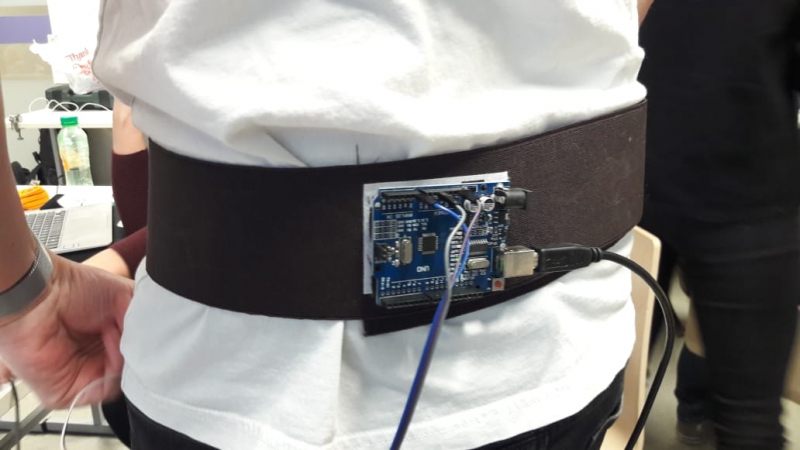
My main goal of participating in this winter school was to try working with Arduino and master the design process from start to finish, something I to my regret don’t always have time to do in my daily life. At Tallinn University I had the opportunity to experiment with different types of not only sensors but also microcontrollers such as Arduino Uno and Adafruit, and the support was always there for me if I needed it. Developing my designer thinking was also a very interesting aspect of my time there. It was a good challenge for me, too.
I also learned making models in SketchUp, which turned out to be easier than I thought. Something else I didn’t expect was the skill of working as part of an international team. I was a bit terrified of it prior to starting out, but in the end I really enjoyed it, especially the team brainstorming part. What’s more, the school provided me with a project that will serve as a great addition to my portfolio, one that I will be proud to show to others.
